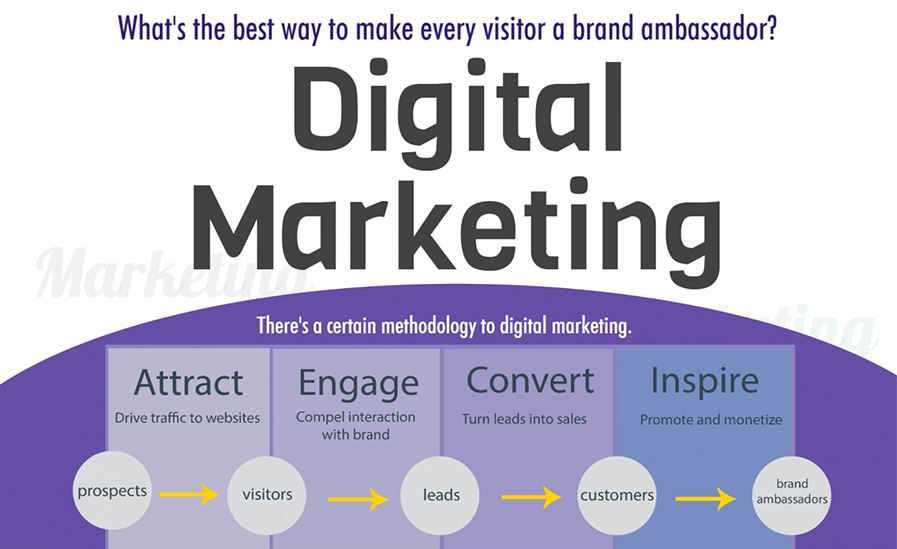Customers won’t buy what they don’t understand. That idea is straightforward enough, but applying it can be challenging when trying to market a product or service in a complicated industry.
A lot of excellent products and important services are valuable because they handle complex tasks so consumers don’t have to. However, if the audience doesn’t understand those complicated factors to begin with, it may not be clear just how helpful these offerings are. To market them effectively, businesses must explain highly technical topics in a way anyone can understand, and therein lies the challenge.
While marketing in complicated industries can be tricky, it’s far from impossible. Here are 10 steps to help.
1. Learn the Topic
First things first, it’s important to recognize that you can’t explain what you don’t understand yourself. Consequently, marketers must do some research before they can begin writing.
Marketers don’t have to be experts in a given field to talk about it, but they should have some baseline knowledge. Turning to the actual experts and reading articles from industry insiders is an excellent place to start. AI tools can also help, as they can reduce research time by compiling basic information and resources to kickstart the process faster. Once marketers feel like they can visualize the topic or explain it to themselves, they can take the next steps.
2. Decide on a Niche
As with any kind of marketing, it helps to focus on a specific niche. That’s because what a piece needs to explain and how best it can go about that explanation depends on its audience. Different niches have all sorts of backgrounds, experiences and knowledge levels that determine what kinds of information are most helpful for them.
Gen Z spends twice as much time on social media as Gen X, so a younger audience doesn’t need as much explanation about TikTok trends or how different platforms work. That also means examples from social media may resonate with them more. Many decisions later in this process depend on the specific audience, so it’s important to define it early.
3. Create Buyer Personas
With a specific market niche in mind, marketers can create more granular buyer personas. Define who the target reader is, considering their background, age, occupation and interests. These details can help inform what information they’re after, what details they may need and not know it, why they’re searching for a specific keyphrase and their preferences.
Buyer personas are an important part of marketing regardless of the topic, as 93% of companies exceeding revenue goals use them. However, they’re particularly helpful for explaining complicated subjects. That’s because they can help marketers understand their audience’s background knowledge and what they’re most familiar with, making it easier to create relevant, helpful explanations.
4. Focus on What the Reader Needs to Know
Now it’s time to start creating some content. It may be tempting to include as many details as possible here, as there may be a lot to explain if an audience isn’t familiar with a complex topic. However, it’s better to only focus on what matters.
The audience doesn’t need to know everything about a subject, just what impacts them specifically in their unique situation. Users spend less than a minute on a webpage on average, so if they have to sift through pages of information to find what they want, they’ll likely click away. Use buyer personas to determine what readers absolutely need to know and focus on that.
5. Pay Attention to Word Choice
Another way to make complicated subjects easier to grasp is to consider word choice more carefully. In the research phase, marketers will likely come across a lot of technical terms and jargon. Those concise ways to refer to things are great for writing to industry insiders, but not necessarily for the average consumer.
If some technical terms are unavoidable — sometimes readers must know them to understand other documents they’ll encounter in the industry — explain their meaning before using them. Otherwise, stick to more familiar words and phrases. Beyond industry-specific terms, try to use short, simple words as much as possible and keep sentences in the active voice to remain engaging.
6. Tell a Story
One of the challenges of marketing in complicated industries is that a blog full of explanations can quickly sound like a textbook. That’s not engaging. Marketers can avoid this problem and keep readers’ attention by approaching content from a storytelling perspective instead.
Use case studies to illustrate how a product or service helped someone in real life. Set the scene by introducing a problem people like those in the audience face, then talk about how they can overcome those issues with the client’s help. Studies show that storytelling improves knowledge retention with complex subjects like finance, so structuring content as a narrative will make the information easier to digest.
7. Give Specific Examples
A great way to boost the narrative elements of your content is to provide specific examples. Even if it weren’t for storytelling’s benefits, concrete examples illustrate the real-world advantages of a product or service, so they’re a better marketing tool than a list of information.
Client testimonials and case studies are ideal illustrations, but marketers can use various other types of examples, too. Graphs and images are also helpful, especially considering that 65% of the population is visual learners. Videos may be even more effective as they engage more of the audience’s senses.
8. Ask Questions
Making complicated subjects easy for a specific audience to understand means trying to see things from their perspective. An effective but often overlooked way to do that is to ask questions. Involve the target audience in the content creation process by surveying them about what they’d like to know or don’t understand.
Similarly, marketers can leave question forms or links to FAQs on a content marketing page to help readers who want to learn more. Take this page on insurance policies, for example. Notice how it ends on a bubble asking if readers still need help understanding the complicated subject of insurance documents and offers a couple of options to learn more. On top of helping meet users where they are, this can generate more engagement with the brand.
9. Consider Different Content Types
Even within a specific niche, people learn in different ways. Providing multiple ways to digest a topic serves these diverse needs and can help people understand tricky subjects by giving them numerous perspectives. Consequently, it’s a good idea to take advantage of several different types of content.
Blog posts are great places to explain concepts in-depth, but videos are often a more efficient way to demonstrate practical steps. Feel free to experiment within the same content type, too, using varying lengths, structures and points of view.
10. Be Willing to Adjust
Finally, marketers should recognize that what works today won’t necessarily be the best option tomorrow. The fast-paced nature of the internet means consumer trends change faster than ever, with some trend cycles lasting mere weeks or even days. As a result, the types of content that perform the best or the kind of information an audience wants are always shifting, so marketers should remain flexible.
Monitor relevant KPIs at least every few months to see how changing trends affect the performance of complicated industry content. Adjusting to these changes will help ensure content stays relevant, leading to improved retention and interest from the audience.
Marketing Complex Topics Doesn’t Have to Be Complicated
Don’t overcomplicate complicated content. While it may seem challenging to make complex subjects easy for non-experts to grasp, these steps can help.
When marketers know how to see things from the user’s perspective, they can break virtually anything down into easily digestible, relevant bits. They can then ensure success for their firm and its clients.
Related Posts
Devin Partida writes about topics concerning tech and the internet. She is also the Editor-in-Chief of ReHack.com.







